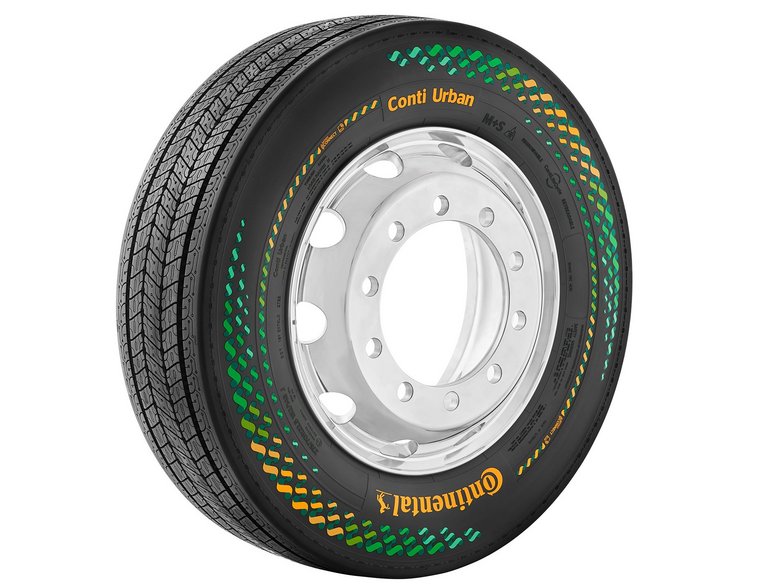The Conti Urban tire premiered at the 2022 IAA Transportation event to showcase its sustainability features. The concept is designed for electric city buses and delivery vehicles built for urban transportation.
It is made up of about 50 percent recycled and renewable feedstock. Its tread contains about 68 percent renewable materials. This includes silica derived from responsibly-sourced natural rubber and ash from rice husks.
The rubber originates from a combined development project by Deutsche Gesellschaft für internationale Zusammenarbeit’ (GIZ) and Continental. There’s high transparency and high levels of traceability thanks to cutting-edge technology, close collaboration amongst strong partners, and local involvement in rubber cultivation.
Among the materials that Continental uses to build the tire include recycled steel, recovered carbon black, and Reclaim material. The rubber is obtained from the company’s innovative recycling and retreading plant for truck tires based in Hanover, Germany.
The Conti Urban can be retreated to breathe new life into a worn but intact tire casing. This pays off well since there’s a high share of all materials used.
“Our Conti Urban increases its sustainability even more when its service life is extended. Once the tire is retreaded, so when the casing receives a brand-new tread, the share of renewable and recycled feedstock rises to more than 90 percent,” says Kreipe. “By 2050, we want to use 100 percent sustainably produced materials in all our tire products and achieve full climate-neutrality along our entire value chain.”
Tire developers at Continental prioritized noise emission optimization and high energy efficiency. The special rubber compound and rigid profile reduce rolling resistance by 7 percent in comparison to the current Conti Urban.
The noise frequencies produced as the tire rolls on the road surface are distributed over a wider range. This reduces the perceived noise level and improves an individual’s perception of the noise. Overall, it helps to reduce noise pollution from delivery traffic and urban buses.


